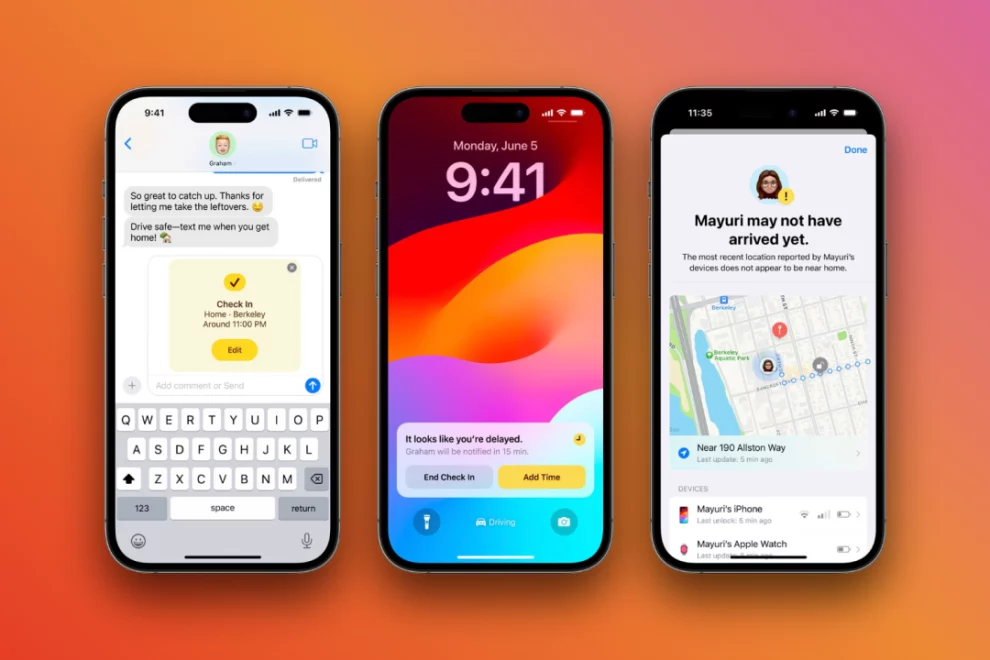With the release of iOS 17, Apple has introduced an innovative new feature called Check In that takes your personal safety to the next level. Check In allows you to easily notify designated contacts once you’ve safely arrived at a destination, providing extra reassurance when navigating unfamiliar places or situations that may feel uncomfortable. In this comprehensive guide, we’ll walk you through everything you need to know about using Check In on your iPhone.
What is Check In and How Can It Bolster Your Security?
At its essence, Check In is an intelligent notification system built into the iOS Maps app. It enables you to proactively share your successful arrival at a specific location with chosen contacts. This proves immensely valuable in scenarios where you might feel vulnerable or uneasy, such as:
- Traveling solo, especially at night or in unfamiliar areas
- Exploring a new city or neighborhood for the first time
- Meeting up with someone you don’t know well
- Engaging in activities that entail some level of risk
By leveraging Check In to keep trusted friends and family in the loop about your whereabouts, you establish an additional layer of security. Your contacts gain visibility into your safe arrivals and can promptly respond if any concerns arise when an expected check-in is missed.
Setting Up and Using Check In: A User-Friendly Walkthrough
Activating and utilizing Check In is a breeze thanks to its intuitive integration with the iPhone’s Maps app. To get started, simply follow these steps:
-
- Open Maps: Locate the Maps icon on your iPhone’s home screen or app library and tap to launch it.
Copy code
- Find Your Destination: Use the search bar at the top of the Maps interface to enter the address or name of the place you’re headed to. Maps will display matching results.
- View Destination Details: Tap on your desired destination in the search results to bring up its detailed information screen.
- Turn On Check In: Look for the “Share ETA” option on the destination details screen. Tapping this will reveal a new toggle labeled “Check In”. Slide it to the ON position to enable Check In for this particular trip.
- Choose Your Contacts: Upon activating Check In, Maps will prompt you to select which contacts you’d like notified upon reaching your destination. You can pick individuals from your existing contacts or even make a custom group specifically for check-ins. This allows you to curate your safety network.
- Customize Notifications (Optional): While choosing contacts, you’ll have the ability to personalize how and when they are notified. Options include sending a one-time alert right as you arrive or setting up periodic updates at defined intervals to provide ongoing visibility.
- Finalize Setup: After selecting contacts and adjusting notification settings to your preferences, tap “Done”. You’re now ready to embark on your trip with the added confidence of having Check In watching your back.
- Complete Your Journey: Proceed to your destination normally. Check In will automatically detect your arrival based on your iPhone’s location data and send out notifications to your designated contacts, letting them know you’ve made it safely.
Important Considerations for Optimal Check In Performance
To ensure Check In operates optimally, there are a few key factors to bear in mind:
- Enable Location Services: Check In relies on your iPhone’s GPS capabilities to accurately determine your arrival at a destination. Make sure you have Location Services enabled in your device settings for the Maps app.
- Maintain Realistic Expectations: While incredibly useful, Check In is not a foolproof guarantee of personal security. It’s still essential to rely on your instincts, practice situational awareness, and prioritize your safety above all else.
- Proactively Communicate: Let your designated contacts know in advance that you’ll be using Check In and relying on them as part of your safety plan. This ensures they are prepared to receive and react appropriately to any notifications.
- Review Notification Settings Regularly: As your schedule and needs change, take a moment to review and adjust your Check In notification preferences accordingly. This keeps your safety net aligned with your current lifestyle and priorities.
Exploring Additional Features for Enhanced Functionality
In addition to its core arrival notifications, Check In offers several supplementary features to further augment your safety and provide your contacts with valuable information:
Real-Time ETA Sharing
Beyond notifying contacts when you’ve reached your destination, Check In can also keep them apprised of your estimated arrival time while en route. This ETA sharing adds an extra dimension of transparency, allowing your loved ones to track your progress and anticipate when to expect you.
Seamless Emergency SOS Integration
In the event of an actual emergency while using Check In, you can swiftly summon help without fumbling through additional apps. Simply trigger your iPhone’s built-in Emergency SOS feature by holding the side button and either volume button. This initiates an emergency call and sends your precise location to designated emergency contacts and local authorities.
Contextual Prompts and Suggestions
As you engage with Check In over time, it begins to learn your habits and frequent destinations. The feature may start proactively suggesting enabling Check In for upcoming trips it deems potentially sensitive or high-risk, such as late-night excursions or visits to unfamiliar locales. These contextual nudges serve as helpful safety reminders.
Distinguishing Between Check In and Find My
For those familiar with Apple’s existing Find My service, it’s crucial to recognize the distinct differences between it and Check In:
- Purpose: Find My is designed for general location sharing and tracking of people and devices. Check In focuses specifically on critical arrival notifications in the interest of personal safety.
- Notification Triggers: Find My updates a person’s location continuously in the background. Check In only sends notifications when you’ve arrived at a pre-specified destination.
- User Interaction: Find My operates invisibly, while Check In requires intentional user engagement to configure and activate arrival alerts for each relevant trip.
- Safety Features: Check In boasts unique safety-oriented capabilities like Emergency SOS integration and contextual risk suggestions. Find My offers more generalized location functionality without these specialized safety elements.
Ultimately, while Check In and Find My share the common thread of location sharing, they fulfill separate roles in your overall iOS safety toolkit.
Putting Check In to Work for Your Peace of Mind
With its thoughtful design and intuitive operation, Check In has the potential to revolutionize how we experience and maintain personal security in our highly mobile modern lives. By providing a straightforward yet powerful way to keep our trusted contacts informed of our safe arrivals, it empowers us to navigate the world with an added layer of digital protection and peace of mind.
As you explore this new feature, take the time to consciously integrate it into your personal safety routines and openly communicate with your loved ones about how you’ll be utilizing it. Encourage them to adopt Check In as well so that you can mutually look out for each other’s wellbeing.
While no technology is a replacement for prudent judgment and responsible decision-making, Check In stands as a valuable ally in our ongoing quest for enhanced security and autonomy. So the next time you embark on a trip that leaves you feeling slightly apprehensive, let Check In accompany you and serve as a silent guardian, ready to summon aid should the need arise.
Stay safe out there, and happy checking in!
















Add Comment